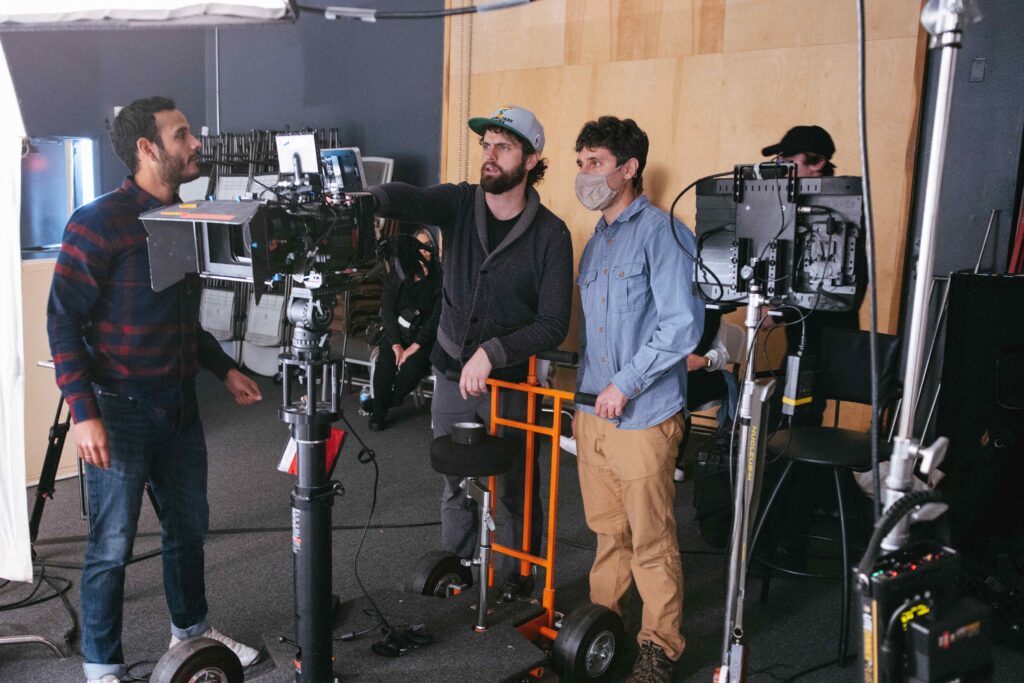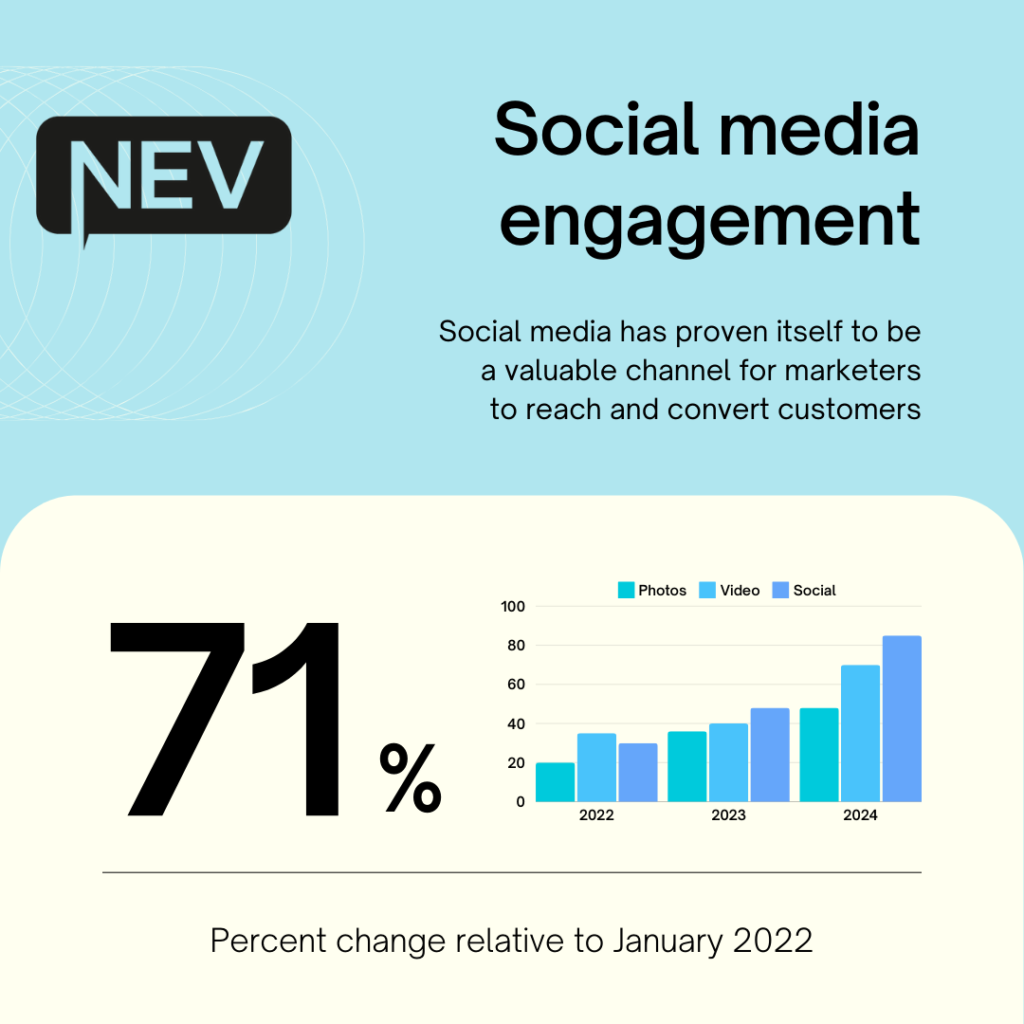As a content creator for the Fortune 500’s over the last 17 years, I‘m often fielding questions about what content creation is and why it’s so integral to marketing.

Whether you’re a seasoned marketer or just dipping your toes into the content pool, a well-crafted strategy is essential. It’s like having a roadmap for your brand’s journey, guiding you towards your goals and ensuring your content is hitting the mark. Imagine you want to increase brand awareness. A content strategy might involve focusing on SEO to boost your website’s visibility and drive traffic. Or perhaps you’re looking to generate leads. A content strategy could help you create valuable content that attracts and nurtures potential customers.
You might be thinking, ‘I’m a small business. Do I really need a content strategy?’ The answer is yes! A well-executed strategy can help you build trust with your audience, establish your brand as an authority, and ultimately drive sales.
A content strategy is the foundation of your ‘Attract and Delight’ stages in the buyer’s journey. It helps you attract potential customers and keep them engaged with your brand. Plus, with so many marketers investing in content, having a solid strategy is crucial to staying competitive.
A content strategy plan is your roadmap to creating, publishing, and managing effective content.
To ensure your strategy is comprehensive, include these essential element

So, whether you’re just starting out or looking to refresh your existing strategy, remember: a well-crafted content plan is the key to unlocking the full potential of your marketing efforts.
Here’s why:
Aligns the Team on Goals and Objectives
A content marketing strategy acts as a shared roadmap for your team, ensuring everyone is working towards the same goals. When content creators, social media managers, and writers have a unified vision, they can produce content that consistently supports your business objectives. This alignment reduces confusion, improves collaboration, and ultimately increases your chances of achieving tangible results.
Guides Content Creation and Distribution
Your content strategy provides a clear framework for creating and distributing content. It helps you determine the best topics to cover, the most effective formats to use, and the optimal channels for reaching your target audience. By following this roadmap, you can ensure that your content is relevant, timely, and engaging, leading to increased audience engagement and conversions.
Optimizes Resources
A well-defined content strategy helps you allocate your resources more efficiently. By understanding your goals and target audience, you can prioritize content creation and distribution efforts that will yield the highest return on investment (ROI). This means you can focus your time, budget, and manpower on activities that truly matter, maximizing your marketing impact.

Improves Online Visibility
A content marketing strategy that incorporates SEO best practices can significantly boost your online visibility. By creating high-quality, optimized content, you can improve your search engine rankings, attract more organic traffic to your website, and increase your brand’s reach. This can lead to more qualified leads, increased conversions, and ultimately, business growth.
Builds Brand Authority and Trust
Consistent, valuable content is essential for establishing your brand as a thought leader in your industry. A content strategy helps you develop a content calendar that ensures you’re regularly producing high-quality content that resonates with your audience. Over time, this builds trust and credibility, making your brand more attractive to potential customers and fostering long-term loyalty.
Setting Your Goals: Defining Success
Your content strategy should be aligned with your overall business goals. Clearly define what you want to achieve with your content, whether it’s increasing brand awareness, generating leads, or driving sales. This will help you stay focused and measure the success of your efforts.

Know Your Audience: Understanding Your Customers
Create detailed profiles of your ideal customers. Understand their needs, pain points, interests, and preferences. This information will help you tailor your content to resonate with your target audience and increase engagement.
Content Inventory: Assessing Your Current State
Conduct a thorough audit of your existing content to identify strengths, weaknesses, and opportunities for improvement. Analyze your website’s performance, social media metrics, and audience engagement to gain insights into what’s working and what’s not.
Content Mix: Choosing the Right Format
Determine the most suitable content formats and distribution channels for your brand. Consider factors such as your audience’s preferences, your resources, and your business goals. This will help you create content that is both effective and efficient.
Workflow Efficiency: Streamlining Your Process
Establish a clear content creation process that outlines the steps involved in producing high-quality content. This may include ideation, research, writing, editing, design, and approval. A well-defined process ensures consistency and efficiency throughout your content creation workflow.
Measuring Impact: Tracking Your Results
Set key performance indicators (KPIs) to track the success of your content strategy. Use analytics tools to measure metrics such as website traffic, social media engagement, leads generated, and conversions. This data will help you identify areas for improvement and optimize your content strategy over time.

Maintaining Consistency: Ensuring Quality and Brand Alignment
Establish guidelines and procedures for content governance to ensure consistency, quality, and compliance with brand standards. This may involve setting editorial guidelines, assigning roles and responsibilities, and implementing a content approval process. Effective content governance helps maintain your brand’s reputation and ensures that your content aligns with your overall business objectives.
Creating a successful content marketing strategy requires a solid foundation. To get started, you’ll need to gather the following essential elements:
1. Brand Guidelines: Your Brand’s Bible
Brand guidelines serve as a comprehensive reference for maintaining consistency across all your marketing materials. They outline your brand’s voice, tone, style, visuals, and messaging. By adhering to these guidelines, you ensure a cohesive brand experience for your audience.
2. Editorial Calendar: Your Content Roadmap
An editorial calendar is a visual planning tool that outlines your content schedule. It helps you plan and organize your content creation and publication efforts. By scheduling your content in advance, you can ensure a consistent and timely flow of information.

3. Content Clusters: Organizing Your Knowledge
Content clusters, also known as topic clusters, are a strategic approach to organizing your content around a central theme or topic. By grouping related content together, you can improve your website’s structure, enhance SEO, and provide a better user experience.
4. Marketing Funnels: Guiding Your Customers
A marketing funnel represents the customer journey from awareness to purchase. By understanding your marketing funnel, you can tailor your content to each stage of the buyer’s journey, increasing the likelihood of conversion.
5. Competitive Research: Understanding the Landscape
Competitive research involves analyzing your competitors’ content strategies, marketing tactics, and overall performance. By understanding your competitors’ strengths and weaknesses, you can identify opportunities to differentiate your brand and improve your own content marketing efforts.

Building Your Content Strategy Framework
- Define Your Goals: Clearly outline what you want to achieve with your content, whether it’s increasing brand awareness, generating leads, or driving sales. Setting specific, measurable, achievable, relevant, and time-bound (SMART) goals will provide a clear direction for your content strategy.
- Understand Your Audience: Create detailed profiles of your ideal customers, known as buyer personas. This involves understanding their demographics, needs, pain points, interests, and preferences. Tailor your content to address their specific concerns and provide value.
- Assess Your Current Content: Conduct a thorough audit of your existing content to identify strengths, weaknesses, and opportunities for improvement. Analyze your website’s performance, social media metrics, and audience engagement to gain insights into what resonates with your audience and what doesn’t.
- Choose Your Content Hub: Select a suitable content management system (CMS) to organize and manage your content. Consider factors such as ease of use, scalability, and integration with other marketing tools. A robust CMS will streamline your content creation and distribution processes.

- Determine Your Content Mix: Decide on the types of content you’ll create, such as blog posts, videos, infographics, or social media posts. Consider your audience’s preferences, your resources, and your business goals when making these decisions. A diverse content mix can help you reach a wider audience and keep your content fresh and engaging.
- Brainstorm Ideas: Generate creative content ideas that align with your goals and resonate with your target audience. Use techniques like mind mapping, brainstorming sessions, and competitor analysis to spark inspiration.
- Publish and Promote: Distribute your content through the appropriate channels, such as your website, social media, email marketing, and paid advertising. Monitor your content’s performance and make necessary adjustments to optimize your strategy.

Here are 10 captivating statistics that highlight the power of content marketing:
- Content is King: According to Content Marketing Institute, 97% of marketers agree that content marketing is important for their business.
- ROI Boost: HubSpot found that companies that invest in content marketing see a 13x return on investment (ROI).
- Traffic Surge: Content marketing can drive significant traffic to your website. A study by BrightEdge revealed thatbusinesses with a documented content strategy see an average 3.5x increase in organic traffic.
- Lead Generation: Content marketing is a powerful lead generation tool. In fact, 74% of marketers report that it generates demand and leads.
- Customer Engagement: Content marketing helps build relationships with customers. A study by CoSchedule found that 78% of marketers say content marketing improves customer loyalty.
- Brand Awareness: Content marketing can significantly boost brand awareness. A study by HubSpot showed that 70% of marketers believe content marketing is effective for increasing brand visibility.
- Thought Leadership: By creating valuable content, you can position your brand as a thought leader in your industry. This can attract new customers and build trust.
- Social Media Success: Content marketing is essential for social media success. A study by Buffer found that businesses with a content strategy are 57% more likely to acquire new customers through social media.
- Search Engine Optimization (SEO): Content marketing is a key component of effective SEO. By creating high-quality, relevant content, you can improve your search engine rankings and attract more organic traffic.
- Conversion Rates: Content marketing can improve conversion rates. A study by HubSpot found that companies that blog have a 55% higher number of leads than those that don’t.

Crafting Your Content Strategy: Key Considerations
Crafting a Compelling Content Strategy
To create effective content that resonates with your audience, it’s essential to define your strategy. Begin by conducting a comprehensive analysis of your target audience. Understand their demographics, including age, gender, location, income, education level, and other relevant factors. Delve into their interests, hobbies, passions, and what they enjoy reading, watching, or listening to. Identify their pain points, the challenges, questions, or frustrations they face. Observe their online behaviors, how they interact with content, their habits, and where they spend their time.
If you have a diverse audience, consider tailoring your content to appeal to multiple segments while maintaining a consistent brand voice. This might involve creating different content formats or focusing on specific topics that resonate with each segment.
Once you have a clear understanding of your audience, identify the problems they face. Conduct thorough research to uncover their most pressing needs and desires. Create a visual representation of their journey, mapping out their pain points and challenges. Develop content that directly addresses these problems and offers practical solutions. Position yourself as the expert who can solve their problems and provide valuable insights.
To differentiate your brand and stand out from competitors, clearly articulate your unique selling proposition (USP). Conduct a competitive analysis to identify areas where you can excel and communicate the value your content provides to your audience. Highlight your unique strengths and differentiate yourself based on factors such as quality, expertise, customer service, or innovative approaches.
Choose the right content formats to engage your audience and keep them coming back for more. Experiment with various options like blog posts, videos, infographics, podcasts, or social media posts to determine what resonates best with your target audience. Consider their consumption habits and preferences when selecting formats. Create a balanced content calendar that includes a variety of formats to avoid monotony and keep your audience engaged.
Finally, select the most effective platforms to reach your target audience. Consider their online habits and the suitability of your content format for each platform. Optimize your content for each channel, ensuring it aligns with platform-specific guidelines and best practices. Develop a distribution strategy to promote your content across different channels and reach a wider audience.
Content Strategy vs. Content Tactics: A Complementary Pair
Think of content strategy as the blueprint for your content marketing efforts. It outlines the overarching goals, target audience, and key messages. Content tactics, on the other hand, are the specific actions you take to bring your strategy to life. They involve deciding what type of content to create and how to produce each piece effectively.
Both content strategy and tactics are essential for a successful content marketing program. A well-defined strategy provides the direction, while effective tactics ensure your content reaches your audience and achieves your goals.
1. Blog Posts
Blog posts are versatile pieces of content that can be used to educate, inform, and entertain your audience. They can cover a wide range of topics, from industry news and trends to product reviews and customer stories. Regular blogging can help improve your website’s SEO, drive traffic, and establish your brand as a thought leader.
When creating blog posts, focus on providing value to your readers. Answer their questions, solve their problems, or offer unique insights. Use keywords strategically to improve your search engine rankings.
2. Ebooks
Ebooks are in-depth, downloadable guides that offer valuable information on a specific topic. They can be used to generate leads, build email lists, and position your brand as an expert in your industry.
Ebooks are a great way to provide comprehensive information on a complex subject. They can be used to educate your audience, inspire them to take action, or offer a premium resource for your customers.
3. Case Studies
Case studies showcase how your product or service has helped real customers achieve their goals. They can be a powerful tool for building trust, credibility, and social proof.
When writing a case study, focus on highlighting the specific benefits your product or service provided to the customer. Use quotes from the customer to emphasize their satisfaction and success.
4. Templates
Templates can be a valuable resource for your audience, providing them with pre-designed materials that they can customize for their own use. This can include templates for emails, presentations, social media posts, or other marketing materials.
By offering templates, you can simplify your audience’s tasks, save them time, and demonstrate your commitment to providing value.
5. Infographics
Infographics are visually appealing representations of data or information. They can be a great way to break down complex topics into easily digestible pieces and share information on social media.
When creating infographics, use clear visuals, concise text, and a consistent color scheme. Ensure that the information is accurate and easy to understand. Infographics are highly shareable on social media, so make sure to optimize them for sharing.

6. Videos
Videos are a highly engaging form of content that can be used to educate, entertain, and inspire your audience. They can be used for tutorials, product demonstrations, interviews, or storytelling.
Videos can be a great way to showcase your products or services in action. They can also be used to build relationships with your audience by sharing personal stories or behind-the-scenes footage.
7. Podcasts
Podcasts offer a unique opportunity to connect with your audience through audio content. They can be used to share expert insights, interview industry leaders, or simply provide entertainment.
Podcasts are a great way to build relationships with your audience and establish yourself as a thought leader. They can be used to provide valuable information, share personal stories, or simply entertain your listeners.
8. Social Media
Social media platforms are essential for reaching your target audience and building a community around your brand. By sharing your content on social media, you can increase visibility, drive traffic to your website, and engage with your followers.
When using social media, it’s important to create engaging content that resonates with your audience. Use a variety of content formats, such as images, videos, and text posts, to keep your followers interested.

I asked 12 experts from Featured what are the 12 biggest hurdles in video content creation & how to overcome them, here is what they said:
Transitioning to Short-Form Video Content
One of the biggest hurdles we’ve faced in creating video content was transitioning from long-form to short-form videos, especially with the rise of platforms that demand concise, attention-grabbing content. Initially, it was challenging to condense our message while still conveying the depth and value of our offerings. We were used to having ample time to dive into details, but with short-form content, we had to quickly capture the viewer’s attention without making the content feel superficial.
A specific example of this challenge was when we first started creating short-form videos for our social media channels. We struggled to find the right balance between being informative and engaging within such a limited timeframe. However, through trial and error, and by focusing on the core message we wanted to convey, we gradually learned to craft videos that were both crisp and impactful. We’ve now embraced this format, using it to highlight key aspects of our platform and to engage with our audience in a way that feels both meaningful and engaging. Overcoming this challenge has allowed us to connect with our audience more effectively in today’s fast-paced digital landscape.

Jamie Frew, CEO, Carepatron
Improving Audio Quality for Videos
One of the biggest hurdles I faced was dealing with inconsistent audio quality in my videos. Early on, I struggled with background noise and uneven sound levels, which detracted from the overall production value. To overcome this, I invested in a high-quality microphone and began using Adobe Audition for audio cleanup. This significantly improved the sound quality and contributed to a more polished and professional final product.

Arum Ka, Digital Marketing, VideosID
Balancing Jargon with Engaging Content
One of the biggest hurdles we’ve faced at our company is striking the right balance between technical jargon and engaging content. Our clients are SaaS and e-commerce businesses, so the subject matter can get quite complex. We need to present intricate details in a way that is accessible and captivating without losing the essence of what makes our services valuable. It’s a delicate dance—making sure the content is technically sound but also relatable and interesting. We’ve overcome this by collaborating closely with our creative team and conducting thorough reviews to ensure the content hits that sweet spot.
A specific example of this was our campaign for a major SaaS client where we needed to explain a complex feature in a way that was both clear and engaging. Initially, our videos were too technical and didn’t connect with the broader audience. We tackled this by bringing in a professional storyteller to help simplify the content and make it more relatable. After revising the approach, the videos saw a significant uptick in engagement and comprehension, showing that addressing this hurdle effectively can lead to great results.

Marc Bishop, Director, Wytlabs
Tailoring Videos to Diverse Audiences
Ensuring that our video content resonates with a diverse audience has been an ongoing hurdle. Our clients’ audiences vary widely, and tailoring content to meet different preferences and expectations can be quite demanding. We’ve worked around this by incorporating audience feedback into our content strategy and using data-driven insights to guide our approach. By continuously analyzing performance metrics and adjusting our content based on real-world responses, we’ve been able to better align our videos with our audience’s needs.
A challenging instance was when we had to adapt a single video for multiple platforms while ensuring it remained coherent and engaging across all of them. Initially, the content didn’t translate well between platforms, causing inconsistency in messaging. We overcame this by developing a content adaptation strategy that included modular editing and platform-specific tweaks. This approach allowed us to maintain a unified message while optimizing the video’s effectiveness for each platform.

Jason Hennessey, CEO, Hennessey Digital
Maintaining Authenticity in Professional Videos
One of the biggest hurdles I faced when creating video content was maintaining authenticity while keeping the production professional. Early on, we spent significant resources on high-end production, but the videos felt too polished, losing the personal connection we wanted with our audience.
To overcome this, we shifted our focus to more conversational, raw videos where our team speaks directly to the viewer, sharing real experiences. This approach humanized our brand and resonated more deeply with our community. Engagement soared as people appreciated the genuine, unpolished moments that made the content relatable.

Christopher Pappas, Founder, eLearning Industry Inc
Capturing Product Details in Video
We struggled with capturing the true texture and quality of our lighting products in videos. Initially, we noticed that although our lighting setups were visually attractive, they failed to truly showcase the superior craftsmanship of our products. For example, when we introduced a new line of luxury pendant lights, the video clips made the lights appear less impressive than they actually were. The problem was that our standard video equipment and lighting setup weren’t able to capture the subtle details and finish of the fixtures effectively.
To solve this issue, we invested in specialized video equipment. We brought in a macro lens, which allowed us to zoom in and highlight the intricate details of the product that are not visible with standard lenses. We also hired a professional videographer who specializes in product shoots. This expert helped us set up a dedicated studio space where we could control every aspect of the lighting and background. We used techniques like focus stacking, where multiple shots at different focal points are combined to create a final image that is sharp throughout. This ensured that even the finest details of the lighting fixtures, such as the texture of the metal or the sheen of the glass, were captured clearly.
Moreover, we invested in advanced post-production techniques to enhance the video’s accuracy. Following the shoot, we worked with a skilled editor who adjusted the color balance and lighting in the footage to better match the real-life appearance of the products. We also included close-up shots and rotating views in the video to give viewers a comprehensive understanding of the product’s design and quality.

Matt Little, Founder & Managing Director, Festoon House
Embracing Authenticity Over Perfection
The biggest hurdle I faced when creating video content was getting over the fear of looking “too amateur.” I remember when I first started, I thought every video had to be perfectly polished, with high production value. This mindset paralyzed me for a while, and I avoided creating videos because I didn’t have the budget or skills for fancy equipment and editing software.
Eventually, I realized that audiences care more about authenticity than perfection. I started shooting videos with my smartphone and focused on delivering valuable, honest content instead of trying to make everything look like a TV commercial. The engagement actually increased because people connected more with the raw, unfiltered approach. So yes, I overcame it by leaning into being real rather than aiming for professional production quality.

Azam Mohamed Nisamdeen, Founder, Convert Chat
Simplifying Legal Content for Viewers
Last year, I was producing a video series on the importance of updating wills after major life changes. Initially, I found that my scripts were too technical, filled with jargon that could easily confuse someone without a legal background. The early drafts of the videos felt more like legal lectures than helpful guides, and that wasn’t going to achieve the goal of educating and reassuring my clients.
To solve this, I had to rethink my approach. Instead of focusing on legal terminology, I started framing the content around real-life scenarios that clients might face, such as the birth of a child or the sale of a property, and then connecting these events to the need for updating their wills. This shift made the content more relatable and easier to digest. I also incorporated visuals and graphics that simplified complex ideas, making the information more accessible while still maintaining the legal integrity of the advice.
It wasn’t an easy process, and I had to go through several rounds of revisions and feedback to strike the right balance. But ultimately, the effort paid off. The response from clients was overwhelmingly positive, with many expressing how much more comfortable they felt understanding the steps they needed to take. It’s been a learning curve, but I’ve found that the key lies in focusing on the client’s perspective rather than the lawyer’s.

Oliver Morrisey, Owner, Director, Empower Wills & Estate Lawyers
Building Confidence in Front of Camera
The biggest hurdle I faced in creating video content was overcoming my initial discomfort in front of the camera. I remember the first time I tried to film a short introduction for my services; I was so nervous that my hands were shaking, and I struggled to find the right words. It felt so unnatural! However, I decided to tackle this head-on by practicing in front of a mirror and recording myself without the pressure of sharing it online.
I also started small, creating quick, informal videos that felt more like conversations with friends rather than formal presentations. This helped me build confidence and authenticity. Now, I’ve embraced video as a fantastic way to connect with potential clients, and I’ve even started sharing guided meditations that resonate well with my audience!

Hajnalka Nagy, Business Owner | Reiki Healer, Cosmic Self
Creating Engaging Content Across Channels
One of the biggest hurdles I’ve faced in creating video content was maintaining consistent engagement across multiple channels. For example, with Osborne Digital Marketing, my YouTube channel grew to over 70,000 subscribers quickly, but replicating that success on my Ronald Osborne business coaching channel, which currently has 7,000 subscribers, has been slower. The challenge was balancing the content style—marketing versus coaching—while ensuring both channels delivered value. I overcame this by focusing more on personalized, actionable advice in the coaching videos, which has steadily increased subscriber engagement.

Ronald Osborne, Founder, Ronald Osborne Business Coach
Overcoming Technical Challenges on a Farm
The biggest hurdle for me when it comes to creating video content has been dealing with the technical side of production while trying to maintain our brand’s authenticity. There was a particular instance where we wanted to film a video series highlighting our sustainable farming practices. I was excited about it because I knew it would resonate with our eco-conscious customers. However, the reality of filming on a working farm was a lot tougher than I anticipated. We struggled with poor lighting, unpredictable weather, and background noise from the animals, which made the final product look less polished than I had hoped.
We haven’t fully overcome this yet, but we’re getting better with each shoot. I’ve learned that perfection isn’t always necessary—in fact, some of the more raw, imperfect moments have actually added a sense of realness that our audience appreciates. Now, instead of fighting against the challenges, we embrace them. We invest in better sound equipment and flexible lighting, and we keep rolling even when things don’t go as planned. It’s not always easy, but it’s made our videos feel more genuine and aligned with who we are as a brand.

Gabrielle Yap, Senior Editor and Culinary Expert, Carnivore Style
Getting Comfortable with Camera Presence
I’ve been working on creating short-form video content to build my personal brand and grow the business. Honestly, the biggest hurdle I’ve faced when it comes to creating video content hasn’t been idea generation or even editing—it’s getting comfortable in front of the camera.
Hearing my own voice on video? Awkward. And trying not to come off as stiff or overly rehearsed is tough. I want to share financial advice in a way that’s approachable and authentic, but the discomfort of being on camera has definitely been a challenge.
I haven’t completely overcome it yet, but I’m getting better. Each video I make helps me loosen up and be more myself. I’ve started experimenting with different ways to record—keeping things more natural, scripting less, and trusting that I’ll improve with practice. I know I have to climb up “Cringe Mountain” before I can reap the rewards on the other side.

Steven Buchko, Co-Founder & CEO, Steve
In conclusion:
Content strategy is more than just planning and maintenance. It’s a dynamic process that requires time, organization, and creativity. Building a successful content marketing strategy involves laying a solid foundation, implementing effective tools, and following a structured approach. By exploring the resources available, you can streamline the process and make your content strategy a breeze.
And if you’re interested in elevating the content strategy for video production in San Diego for your business, feel free to shoot me an email: [email protected]





